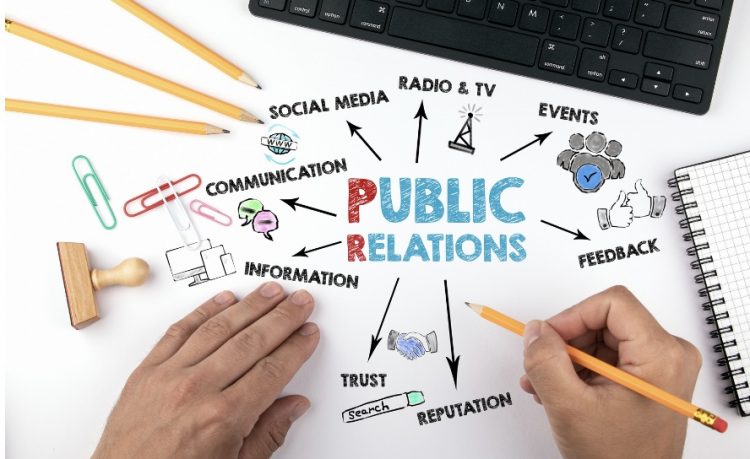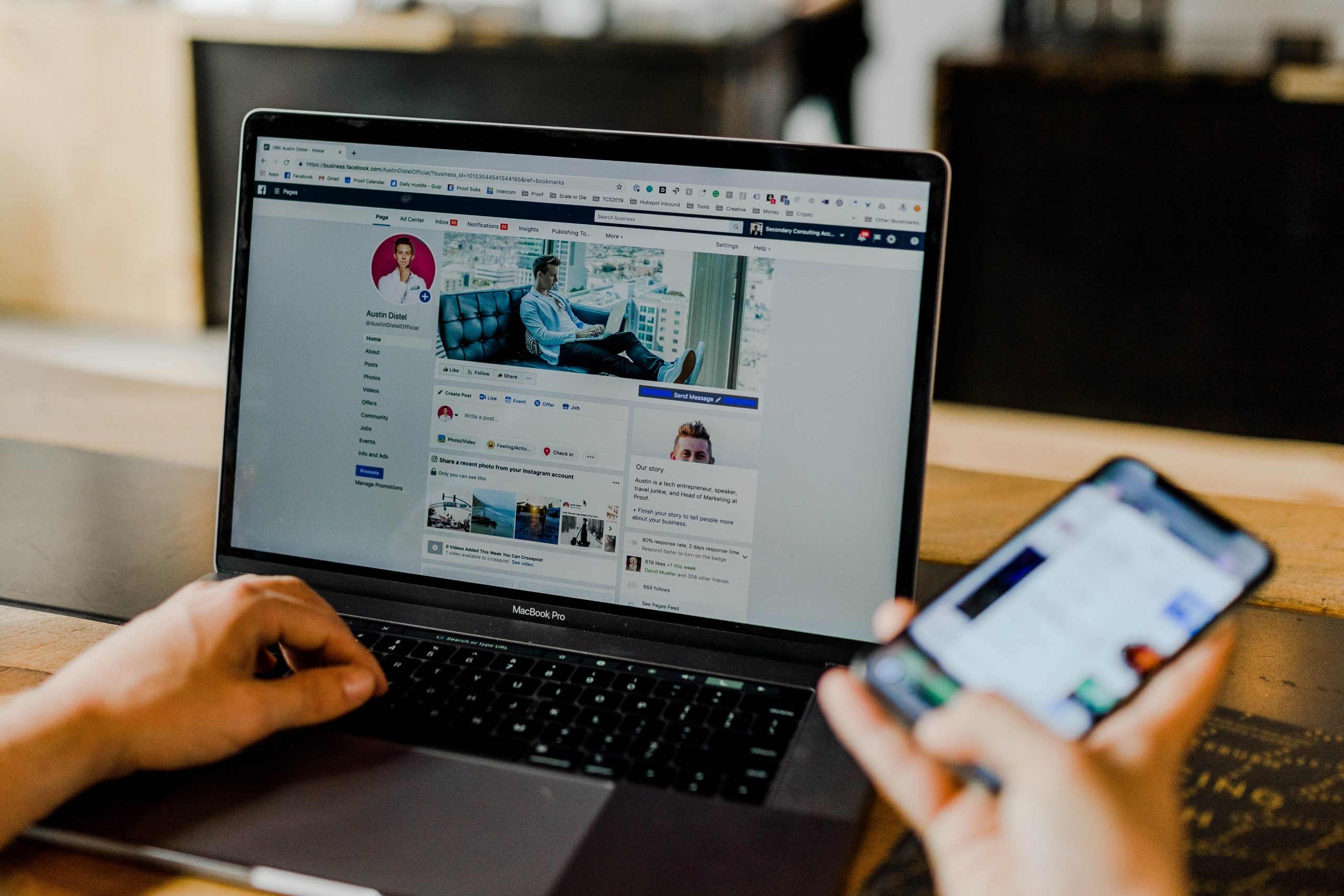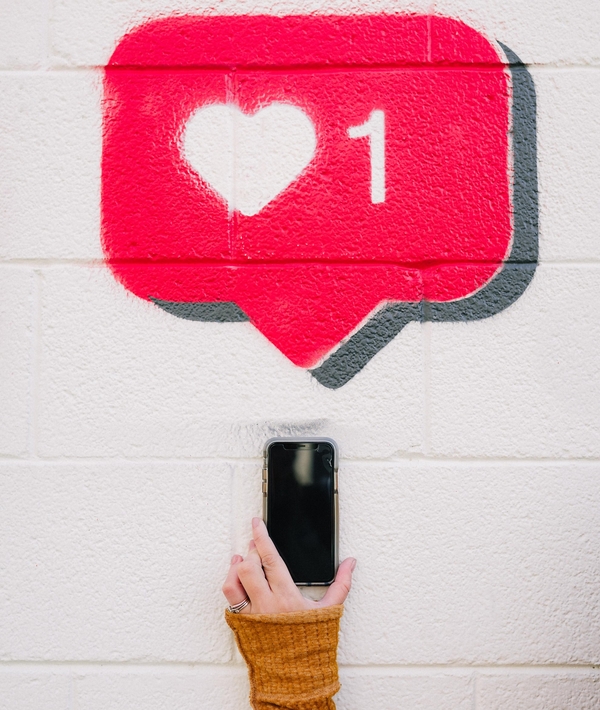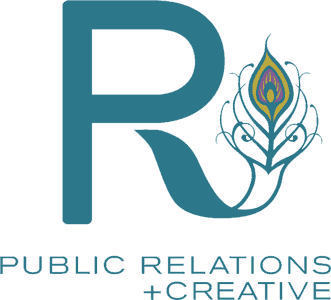Marketing
Tips for Incorporating Social Media Campaigns into Your PR Strategy
Incorporating social media into your PR strategy is not just an option; in the digital age, it's a necessity. The landscape of public relations has evolved dramatically, and social media has emerged as a powerful tool for building and maintaining a brand's reputation. This blog will provide tips for effectively integrating social media campaigns into your PR strategy and discuss the numerous advantages of leveraging social media in public relations.
1. Understand Your Audience
The first step in any successful social media campaign is to understand your audience. This involves researching your target demographic, identifying their preferences, and understanding the platforms they use most frequently. Knowing your audience helps tailor your content to meet their needs and engage them effectively.
Tip: Use social media analytics tools to gain insights into your audience's behavior. Platforms like Facebook, Instagram, and Twitter offer built-in analytics that can help you track engagement, reach, and demographics.

2. Choose the Right Platforms
Not all social media platforms are created equal. Each platform has its own unique features, audience, and best practices. To maximize the impact of your social media campaigns, it's crucial to choose the right platforms that align with your PR goals.
Tip: Focus on platforms where your target audience is most active. For example, if you're targeting a younger demographic, platforms like Instagram and TikTok might be more effective. For a more professional audience, LinkedIn could be the better choice.
3. Develop a Consistent Brand Voice
Consistency is key in building a strong brand presence on social media. Your brand voice should be consistent across all platforms and align with your overall PR strategy. This helps create a cohesive brand image and strengthens your brand identity.
Tip: Develop a style guide that outlines your brand voice, tone, and messaging. This will ensure that all your social media content maintains a consistent look and feel.
4. Create Engaging Content
The heart of any social media campaign is the content you create. Engaging content can capture your audience's attention, encourage interaction, and drive sharing. Whether it's videos, infographics, blog posts, or images, your content should be informative, entertaining, and relevant to your audience.
Tip: Use a mix of content types to keep your audience engaged. Experiment with different formats and analyze what works best for your audience. Don't forget to use hashtags to increase the discoverability of your content.

5. Leverage Influencers
Influencer marketing has become a significant component of social media campaigns. Collaborating with influencers can help amplify your brand's message, reach a broader audience, and build credibility. Influencers have a loyal following, and their endorsement can have a substantial impact on your brand's perception.
Tip: Choose influencers whose values align with your brand. Micro-influencers, with their niche audiences, can be just as effective, if not more so, than macro-influencers.
6. Monitor and Respond
One of the biggest advantages of social media is the ability to engage directly with your audience. Monitoring your social media channels and responding to comments, messages, and mentions in real time can help build a strong connection with your audience and address any issues promptly.
Tip: Use social listening tools to track mentions of your brand and relevant keywords. This will help you stay on top of conversations about your brand and respond quickly.
7. Measure Your Success
To ensure the effectiveness of your social media campaigns, it's essential to measure your success. Analyzing metrics such as engagement rates, reach, conversions, and ROI will help you understand what's working and what's not, allowing you to adjust your strategy accordingly.
Tip: Set clear, measurable goals for your social media campaigns. Use tools like Google Analytics and platform-specific analytics to track your progress and make data-driven decisions.
Advantages of Using Social Media in PR
Incorporating social media into your PR strategy offers numerous advantages that can enhance your overall public relations efforts. Here are some key benefits:
1. Increased Reach and Visibility
Social media platforms have billions of active users worldwide. By leveraging these platforms, you can reach a vast audience that would be difficult to access through traditional PR methods alone. This increased reach can help boost your brand's visibility and awareness.
2. Real-Time Communication
Social media allows for real-time communication with your audience. This means you can respond to inquiries, address concerns, and share updates instantly. Real-time interaction helps build trust and demonstrates that your brand is attentive and responsive.
3. Cost-Effective Marketing
Compared to traditional advertising and PR methods, social media marketing is relatively cost-effective. Many social media platforms offer free or low-cost advertising options that can be highly targeted. This makes social media an attractive option for businesses of all sizes.
4. Enhanced Engagement
Social media platforms are designed for interaction. By creating engaging content and encouraging conversations, you can foster a sense of community around your brand. Engaged audiences are more likely to become loyal customers and advocates for your brand.
5. Improved SEO
An active social media presence can also benefit your search engine optimization (SEO) efforts. Social media profiles often rank high in search engine results, and the content you share can drive traffic to your website, improving its overall SEO performance.
6. Crisis Management
In the event of a PR crisis, social media can be a valuable tool for managing the situation. By addressing the issue promptly and transparently on social media, you can mitigate damage and restore your brand's reputation more effectively.
7. Data-Driven Insights
Social media platforms provide a wealth of data and analytics that can inform your PR strategy. By analyzing this data, you can gain insights into your audience's preferences, behaviors, and sentiment, allowing you to make informed decisions and optimize your campaigns.
Start Incorporating Social Media Campaigns into Your PR Today
Incorporating social media campaigns into your PR strategy is essential for building a strong, engaged, and loyal audience. By understanding your audience, choosing the right platforms, developing a consistent brand voice, creating engaging content, leveraging influencers, monitoring and responding, and measuring your success, you can harness the power of social media to enhance your PR efforts. From increased reach and real-time communication to cost-effective marketing and improved SEO, the advantages of using social media in PR make it a valuable asset in today's digital landscape. Embrace the potential of social media and take your PR strategy to new heights. We’d love to help; schedule your free consultation with RPR Firm today.
Highly Acclaimed PR Industry Leader Continues Momentum in 2024
Built with heart and innovation, R Public Relations is proud to boast the label of a boutique PR firm. The PR industry leader prides itself in understanding the custom needs of every client it works with. The team behind RPR is fueled by clients’ passions and the people that make their businesses run. With a mission to provide exceptionally creative and curated services for their clients, the team puts their heads together to solve novel PR and marketing challenges with creativity, strategy, and a bit of whimsy. RPR’s full suite of services includes campaign creation, public relations, event management, content marketing strategy, social media strategy, and creative services, including photography, art direction, and branding.

2023 was a banner year for R Public Relations (RPR), a fast-growing boutique PR firm. In addition to welcoming 14 new clients to its roster, the firm was recognized by six different publications for its excellence in the fields of marketing and public relations. These awards acknowledge everything from exceptional reputation management to overall preeminence in the field. The RPR team plans to take this momentum throughout 2024 as they dream up fresh, innovative ways to serve their clients.
PR Industry Leader RPR’s Recent Awards
- The 2023 Public Relations and Marketing Excellence Award which recognizes agencies and departments within companies who accelerate brand growth through exposing and promoting great business stories.
- Inc.’s Power Partners 2023, which identifies companies across multiple industries that consistently provide top-notch products and services.
- Great Companies’ Women Entrepreneurs Award, in which judges select high-potential female entrepreneurs with outstanding resumes. Winners must make a “distinctive, unusual, and innovative contribution” to their respective fields.
- Netty Awards’ Advertising and PR Awards, which recognize innovative PR and marketing achievements in the digital age.
- Luxlife Magazine’s Best 5-Star Lifestyle & Hospitality PR Agency 2023, which showcases the very best companies in the hospitality industry today.
- A slew of awards from Clutch Magazine, including Top Reputation Management Company and Top Event Management Company. Clutch awards are given to companies that demonstrate an exceptional ability to deliver consistent, high-quality work to clients.
- Public Relations Agency of the Year, bronze Stevie® winner in The 2024 American Business Awards®. The winners were determined by the average scores of more than 300 professionals worldwide in the three-month judging process.
- Most Reviewed Digital Marketing Leader for 2024 in The Manifest among Nashville digital marketing companies.
Know R Public Relations
With a presence in Tennessee, New York, and Texas, RPR has a history of successfully supporting new business launches, expansions, and major brand initiatives in these diverse regions. The team’s expertise lies in national media recognition, content support, and marketing and PR strategy — all of which work together to strengthen the operations of the small and mid-sized businesses on RPR’s client roster.
Emily Reynolds-Bergh founded RPR and, as a marketing and public relations professional with more than 15 years of experience, is the driving force behind the accolades. She possesses deep knowledge and expansive application of best practices in the PR industry and skillfully leads her team to deliver personalized PR services that produce exceptional outcomes for clients in the hospitality, business, and technology spaces and beyond. Emily’s aim for each client is to empower their highest professional goals and drive their brands to flourish.
The path to her current role at the helm of R Public Relations started by co-authoring a book in grad school that taught her the power of the written word and the value of storytelling. Having found her passion and purpose, Emily dove headfirst into freelance promotional writing, most notably an ongoing gig for Taste magazine. Then, she progressed through pivotal PR positions at Jason Dady Restaurant Group in San Antonio and Bread & Butter in Austin, as well as Bay Bird in San Diego, all the while amassing specialty expertise that would allow her to branch out on her own.
R Public Relations, the PR industry leader, was launched in Texas in 2016 as a customer-focused boutique PR agency serving lifestyle brands. Every day, Emily’s work is enhanced by the distinct perspective her advanced degrees in psychology, philosophy, and social work bring to her team’s campaigns. She remains motivated by her intention to better the world around her with her outreach efforts and is proud to represent a carefully curated list of clients who share that vision and commitment to making a positive impact on their local communities.
Meet the Founder, Emily Reynolds Bergh
Emily has been featured in a multitude of publications and podcasts — including PR on the Go, BuzzFeed, Successful Entrepreneur, Global Publicist, and Authority Magazine — adding to the long list of awards racked up by the firm at large. For its part, RPR has also earned numerous local and regional awards, including being named the Best PR Agency in Nashville by multiple outlets, a Top 10 Reputation Management Company by Mirror Review, and a Certificate of Excellence from Bark. Emily currently serves as a member of the Forbes Business Council and is a regular contributor to Entrepreneur.
As PR industry leaders, RPR and Emily understand the power of elegant PR told through captivating content, creative collaborations, engaging digital media strategy, dynamic event curation, and customized communications, the rarest kind. They help their clients make their mark on culture, and the team looks forward to accomplishing even more groundbreaking work in 2024.
Owned Media Metrics That Matter: Measuring Success in PR Campaigns
In the dynamic landscape of public relations, the metrics used to gauge success have evolved significantly. With the advent of digital media and the proliferation of owned media channels, PR professionals now have an array of metrics at their disposal to measure the effectiveness of their campaigns. In this blog, we'll delve into the owned media metrics that truly matter when evaluating the success of PR campaigns.
Understanding Owned Media
Owned media refers to the channels that a company or organization controls and utilizes to distribute content and engage with its audience. This includes company websites, blogs, social media profiles, email newsletters, and other digital assets. Unlike earned or paid media, it provides brands with complete control over messaging and distribution.

Key Metrics for Owned Media
1. Website Traffic and Engagement
The cornerstone of owned media measurement is website traffic and engagement metrics. Tracking metrics such as unique visitors, page views, time spent on site, and bounce rate provides insights into how effectively your media channels are attracting and retaining audiences. Tools like Google Analytics offer comprehensive data on website performance, allowing PR professionals to assess the impact of their content and messaging.
2. Content Consumption Metrics
Beyond website traffic, it's essential to analyze how audiences are engaging with specific content. Metrics such as the number of blog post views, video watch time, and document downloads offer valuable insights into the effectiveness of your content strategy. By identifying which types of content resonate most with your audience, PR professionals can refine their messaging and optimize future campaigns.
3. Social Media Metrics:
Social media platforms play a pivotal role in owned media strategy, serving as channels for content distribution and audience engagement. Metrics such as likes, shares, comments, and follower growth are indicative of social media performance. Additionally, tracking click-through rates (CTRs) on social media posts provides insights into audience behavior and the effectiveness of call-to-action (CTA) strategies.

4. Email Marketing Metrics:
Email newsletters remain a powerful owned media tool for building and nurturing customer relationships. Metrics such as open rates, click-through rates, and unsubscribe rates offer essential insights into email campaign performance. By segmenting audiences and analyzing engagement metrics, PR professionals can tailor content to specific audience interests and preferences.
5. Search Engine Optimization (SEO) Metrics:
Optimizing owned media content for search engines is crucial for maximizing visibility and organic traffic. Metrics such as keyword rankings, organic search traffic, and backlink profiles provide insights into SEO performance. By continuously monitoring and optimizing SEO metrics, PR professionals can improve the discoverability of their content and drive targeted traffic to owned media channels.
6. Conversion Metrics:
Ultimately, the goal of these media campaigns is to drive desired actions from the audience, whether it's making a purchase, signing up for a newsletter, or downloading a resource. Conversion metrics such as conversion rate, lead generation, and sales attribution are key indicators of campaign success. By tracking conversion metrics alongside engagement metrics, PR professionals can assess the impact of their owned media efforts on business objectives.
Best Practices for Measuring Owned Media Success
Set Clear Objectives:
Before launching a PR campaign, define clear and measurable objectives that align with overall business goals. Whether it's increasing website traffic, generating leads, or driving sales, establishing specific KPIs will guide measurement efforts and ensure accountability.
Use a Balanced Scorecard Approach:
Instead of focusing solely on vanity metrics such as likes and followers, adopt a balanced scorecard approach that incorporates a mix of quantitative and qualitative metrics. By considering metrics related to reach, engagement, conversion, and sentiment, PR professionals can gain a holistic view of campaign performance.

Track Metrics Consistently:
Consistent tracking and monitoring of metrics are essential for identifying trends and measuring progress over time. Establish regular reporting cadences and leverage analytics tools to automate data collection and analysis processes.
Benchmark Against Competitors:
Compare owned media metrics against industry benchmarks and competitors to gain insights into performance relative to peers. Identifying areas of strength and opportunity can inform strategic adjustments and competitive positioning.
In today's digital age, owned media has emerged as a cornerstone of PR strategy, offering brands unprecedented control over content creation and distribution. By leveraging the right metrics and measurement practices, PR professionals can effectively evaluate the success of their owned media campaigns and drive tangible business outcomes. From website traffic and engagement to social media metrics and conversion rates, the key to measuring owned media success lies in adopting a comprehensive and data-driven approach that aligns with overarching business objectives.
Impacts of Intelligent Marketing and PR on Business
With a proper strategy in place, marketing and public relations (PR) can work together seamlessly to improve sales, public opinion, customer loyalty, and so much more! Marketing and PR are distinct practices—marketing focuses on the selling of products, while PR typically focuses on managing and maintaining a brand’s reputation. When applied intelligently, they complement and can strengthen one another.
Keep reading to learn about the varied impacts well-thought-out marketing and PR plans can have on businesses.
1. Increase Brand Awareness

Traditional marketing placements like out-of-home advertising, social media marketing, and in-person events can help sell products. But on a secondary level, they also work to boost brand recognition. PR teams can play off this by complementing marketing efforts with related pitches and other media opportunities. Together, these strategies can boost brand recognition across target demographics and markets.
Brand recognition is far more important for businesses than most realize—according to Liana Zavo, writing for Entrepreneur, “Without publicity and reputation, a business cannot grow in its respective industry.” Brand recognition is not only important for making sales. It also helps maintain and gain market share and subtly impacts public sentiment surrounding a brand.
2. Promote Brand Values
Trust is the most valuable thing a company can possess. With improved brand recognition comes increased awareness of brand values. As such, intelligent marketing and PR strategies can ensure the general public has a comprehensive understanding of a company’s giving initiatives, mission statement, and brand values. These key messages bolster customer loyalty, enhance word-of-mouth marketing, and help keep the top of the marketing funnel full of consumers.
Because social media marketing provides many opportunities for discourse with consumers, social platforms are a great place to share detailed information about company values. Thought leadership, well-placed op-eds, and executive interviews can all achieve similar effects; the strongest plan is to employ all of these strategies at once!
3. Strengthen Community Relations
Community relations fall into the scope of both marketing and PR. Generally speaking, marketing teams can foster relationships between businesses and their neighbors through in-person events and activations, staff volunteerism, and other foot-on-the-street initiatives. Public relations teams can help tell these stories through earned and paid media opportunities. People love to hear heartwarming stories, and these types of narratives also help to strengthen overall brand recognition and public sentiment, even though they don’t push any particular sales agenda!
Brands can also build their own communities by planning meet-ups, volunteer events, and other activations for their consumers and social media followers. PR and marketing teams can coordinate and publicize these events, which are great for demonstrating brand values in an authentic way and exemplifying that a business is interested in more than just selling its products!
4. Boost Staff Morale

Marketing and PR are not just for external campaigns! Especially when it comes to large corporations, marketing and PR strategies should be applied internally to boost staff morale and trust in executive leadership. Some examples of internal marketing and PR campaigns include the rollout of new mission statements and brand values, visual brand redesigns, and onboarding and corporate education.
Regular and effective internal communications impact the satisfaction of the workforce, which will directly affect customer service, word-of-mouth marketing, productivity, and recruitment as well as retention efforts. Internal communications can also be used to ensure employee voices are heard and taken into consideration through town hall meetings and anonymous suggestion boxes.
5. Improve the Profile of Executives
If marketing and PR strategies are executed well, the profile of top-level executives at the company will improve. This is typically achieved through securing speaking opportunities, thought leadership and op-ed placements, conference presentations, and participation on panels. Executives who appear trustworthy, educated, and connected to the company improve consumers’ confidence in the business as a whole.
Additionally, on-staff experts will receive more speaking, writing, and moderating opportunities. The PR team will have to rely less on outside placements. Everyone wins!
6. Keep Audiences Well-Informed

Not all audiences consume news and information from the same channels. Employing a robust marketing and PR strategy will ensure you’re reaching former and future customers wherever they already are instead of having to lure them to your preferred channels. Major business announcements, such as high-profile personnel changes, important product rollouts, and rebrands, should be pushed out across multiple marketing and PR channels to ensure the highest chance of informing all stakeholders. This can include but is not limited to email marketing, social media marketing, press releases, media advisories, interviews, and mailers. Marketing and PR teams must work closely to ensure the success of this type of campaign.
How important is it to hire both marketing and PR teams? Can I get away with just one?
Intelligent marketing and PR strategies will not only complement one another, but they will improve each other’s results. Often, marketing campaigns indirectly result in positive PR and vice versa. But choosing to employ one or the other will likely minimize results and weaken campaigns. Hiring both teams is not a requirement, but it is a smart business move.
Many firms offer both marketing and PR services in order to help businesses streamline their publicity needs. If you are on the hunt for a full-service firm, contact us to schedule a call today!
San Antonio’s Top Influencers and How They Can Help Your Lifestyle Brand
Influencers have become an essential part of public relations strategy, not just for large brands, but for EVERY brand. In fact, the influencer industry is worth $5 to $10 billion according to Social Media Today which is even more amazing because the word itself was just added to the Merriam-Webster Dictionary in 2019. But, regardless of how new, its ‘influence’ should be taken seriously in helping your lifestyle brand to get noticed. Here’s how they can help, along with 10 of San Antonio’s top influencers.
How Influencers Can Help Your Brand
Early on, influencers were primarily celebrities. But celebrity endorsements can be hard to come by and can be expensive. But there are plenty of ‘regular people’ who have built a rapport with their followers as experts on specific topics or in specific categories through their blogs or social media posts, for example. As such they are seen more like trusted friends or peers with credible recommendations on products/services that they actually use. Influencers can help your lifestyle brand by:
- Improving content strategy – With more avenues for fresh content that showcases your brand.
- Improving brand awareness – Through word-of-mouth which still has high engagement even when advertising is too often tuned out.
- Strengthens brand credibility – Because you’re associated with influencers your target audience trusts.
- Creates hype – Influencers are walking-talking endorsements that know how to attract attention.
- Boosts your SEO – With additional links to your targeted keywords.
San Antonio’s Top Influencers
Certainly, you want to find influencers with a strong following, but they don’t need millions to make an impact. Often, it’s those on a smaller scale (less than 500K) who have the most engaged followers which are perfect for lifestyle brands targeting specific niches or locations. Here are our top 10 San Antonio influencers (in no particular order).
1. @s.a.foodie | 274K Followers
San Antonio native Amanda Spencer has won Best Instagram Influencer in the Current’s “Best of San Antonio” reader poll. She posts about food, travel, and more.
2. @quemeanswhat | 9,023 Followers

A 7th Generation Texan, Melanie Mendez-Gonzales explores Latino identity in and around San Antonio focusing on education, entertainment, and family life.
3. @stine.eats | 6,989 Followers
Through her gorgeous photos, you can explore local eats and drinks with San Antonio foodie, Christine Wong, who also can’t resist the occasional fur baby shot.
4. @getfitwithashley | 134K Followers
This fitness guru, Army veteran, and mom of three is here with fitness and food tips to help others get fit and be their best selves.
5. @SATX-Rated | 17.6K Followers
Self-described “San Antonio’s Food & Fun Ambassadors,” follow them to learn about all the fun things to do in SA along with where to eat and drink.
6. @sanantoniostephanie | 14.1K Followers
A finalist in MYSA’s "2022 Your SA Readers' Choice Awards" for Local Social Media Influencer, she posts about food, drinks, and fun in San Antonio.
7. @alamofoodie | 36K Followers
Her bio promises “Experiences, bites, booze,” and that’s exactly what you’ll find on this influencer’s Insta.
8. @flicksandfood | 5,457 Followers
Johnnie is always up-to-date on the latest goings on in San Antonio and beyond.
9. @liveitupsa | 30K Followers
This influencer explores all the cool stuff to do in San Antonio, as well as sharing delectable eats and boozy treats with some fashion and art mixed in to boot.
10. @goodtastetv | 14.3K Followers
Emmy-award-winning journalist and one of our fave clients, Tanji Patton, shares food, wine, and restaurant tips not just in San Antonio but all over Texas.
11. @siempre_sanantonio | 13.9K Followers
One of the top TikToker’s in Texas (2,200,000 likes!!), you can always tell when she on your FYP sharing the next spot to check out when you hear “Hey, friends”!
12.@sanantoniomunchies |45K Followers
Come to his page for the tasty food finds and stay for the memes and hot takes.
13. @salovelist |15.2K Followers
From coffee to cocktails, Gabby’s tried it all and shared it on their page. Sometime their chi-oui-nie, Quebec, makes a guest appearance who has their own Insta too, at @badweenie.
14. @socializesanantonio |25.3K Followers

Jesse’s Instagram is puro San Antonio! Celebrating the city’s events and culture through food and fun, he shares all the exciting things happening around town.
15. @jesselizarraras |10.1K Followers
The former Food + Nightlife Editor for the Current and now the Executive Producer at MySA, Jessica has her finger on the pulse of all things San Antonio.
16. @christina_coker | 23K Followers
This mom of four and life and style influencer shares the latest style trends along with tips for staying beautiful and fashionable on a budget.
17. @saraharoundsa | 2,672 Followers
Some of the best spots and best food photography can be found on Sarah’s feed. The San Antonio native knows where to find the hidden gems and local faves.
18. @jazzexploring | 6,787 Followers
Looking for some travel or fashion inspiration? Jaslyn shares her journey’s via IG, also while dressing really cute!
19. @letsbinge | 4,365 Followers
Feel like one of the Castillo sisters with all the shenanigans that goes down on their feed and in Instagram story’s.
20. @twentysomethingsa | 27.2 Followers
Supporting local is what Twenty Something SA is all about! Through socially impactful content they highlighting businesses, creatives and the city’s unique beauty.
For R help with using influencers as part of your public relations strategy, Click HERE to schedule a FREE Discovery Call Today!
Case Studies in Cause Marketing: 3 Examples of How To Do It Right
 Cause marketing is becoming more and more popular among brands. Yes, because they want to do good in the world, but there are also a number of other benefits as well. However, for maximum impact (for your brand and your cause) there are some things you need to keep in mind. Check out these three case studies for examples of cause marketing done right.
Cause marketing is becoming more and more popular among brands. Yes, because they want to do good in the world, but there are also a number of other benefits as well. However, for maximum impact (for your brand and your cause) there are some things you need to keep in mind. Check out these three case studies for examples of cause marketing done right.
The Benefits of Cause Marketing
By definition, cause marketing is a cooperative effort between a for-profit brand and a non-profit for the mutual benefit of both. The benefits include increased:
- Sales for the brand
- Money contributed to the non-profit
- Connection with consumers
- Awareness of the cause
Keep in mind that cause marketing doesn’t have to focus on just national or global causes. It can and should focus on local causes as well.
Cause Marketing Case Studies

These examples showcase some of the recent cause marketing campaigns we’ve done for R clients.
1. Local Moves Studio’s Partnership with NAMI San Antonio
20-year fitness trainer and endurance athlete, Thomas Roe (T.Roe), whose techniques and expertise have benefitted clients all over Los Angeles, and have been featured in People, LiveStrong and Active, brought his passion for training, teaching, and inspiring change to San Antonio, Texas last fall when he opened Local Moves Studio. As part of the grand opening celebration, R team helped Local Moves partner with the National Alliance on Mental Illness (NAMI), San Antonio, to donate all proceeds made from classes during that weekend to the organization in addition to a $1,000 donation from the studio. NAMI was also onsite to offer information on mental health as well as their services.
This cause is particularly important to Roe as his life has been affected by mental illness in his immediate family. In fact, his approach to fitness at Local Moves is unlike any other circuit training because it also fosters community in order to support mental health by having clients partner with a buddy to motivate and keep each other accountable during workouts and outside of the studio. Roe encourages stepping out of your comfort zone not only physically, but also socially so you can meet others in the community and create bonds with each other to show support while working out, as well as through everyday life.
2. The Gentle Barn Turkey Guardian Campaign
This past fall as we approached the Thanksgiving holiday, R team helped The Gentle Barn, a national non-profit animal rescue group, with a campaign asking consumers to protect turkeys rather than serving during the holiday season. Their Turkey Guardian program provides the opportunity to sponsor one of five turkeys – Romeo, Sun, Luke Skywalker, Heather, or Smudge -- for a one-time donation of $35. Other options include sponsoring the entire Flock for a one-time $150 donation, or The Flock Plus sponsorship, a $1,000 one-time donation, which includes a special Zoom event with the founders.
These funds support the organization’s efforts to rescue, protect and provide a safe and loving living environment for a range of severely abused animals at their sanctuaries located in California (Santa Clarita), Tennessee (Nashville), and Missouri (St. Louis). Sponsors also receive a Certificate of Turkey Guardianship, which includes the turkey's bio, a beautiful photo, and interesting facts about the turkey or turkeys they have chosen.
The idea behind this program is to generate understanding about what these innocent animals are really like as most people don’t realize that turkeys are affectionate, intelligent, and very social. It’s part of their unique philosophy connecting their animals’ stories of survival and healing to the personal experiences of underserved and special needs children who have suffered physical, mental, or emotional trauma. By interacting with animals in The Gentle Barn’s programs and taking a hands-on role in their welfare, they learn empathy, trust, and forgiveness.
3. Aramark Uniform Services Corporate Giveback After 2020 Nashville Tornadoes
On the night of March 2, 2020, a line of tornadoes struck Nashville, Tennessee wiping out beloved local businesses, family homes, and anchor institutions in the community. In the aftermath of the wreckage, one of the many buildings destroyed was Aramark Uniform Services. As a result, over 2,400 of their loyal customers in the service industry and health care facilities throughout Middle Tennessee were without clean, essential uniforms.
As part of its commitment to the Nashville community, Aramark continued to service these customers even while rebuilding their local facility by diverting 550,000 pounds of laundry to seven neighboring Aramark facilities to ensure they didn’t experience service disruptions during a time of need. Aramark also assisted the Nashville community in planting trees in the neighborhoods that were hardest hit by the tornado.
As a long-standing member of the Nashville community, Aramark wanted to make sure its customers, employees, and neighbors knew they weren’t forgotten and enlisted R team to create awareness. It’s also why they were determined to rebuild in the same location, bringing with it a range of employment opportunities as the new facility opens in March of 2022.
For more information on how R team can help your brand with cause marketing, click HERE to schedule a FREE Discovery Call today!
7 Holiday Marketing Ideas for Your Business
 It’s no secret how important the holiday season is to the success of a retail business. In fact, according to the U.S. Census Bureau, holiday sales represent nearly 27% of revenue for the entire year. As we head into the season this year, R team would like to gift you some holiday marketing ideas to help your business connect with consumers and stand apart from the competition.
It’s no secret how important the holiday season is to the success of a retail business. In fact, according to the U.S. Census Bureau, holiday sales represent nearly 27% of revenue for the entire year. As we head into the season this year, R team would like to gift you some holiday marketing ideas to help your business connect with consumers and stand apart from the competition.
- Speak to their wallet – This time of year, there’s perhaps nothing that speaks to consumers more than a good deal. Consider how you can capitalize on that with discounts, flash sales, and even gift card promotions. For small businesses that may not be able to offer deep discounts, consider gift bundles with complementary products/services that offer value to consumers.
- Team up with your influencers – Influencer marketing is now one of the most effective ways for businesses to generate positive word-of-mouth and sales. Why? Whether it’s celebrities, social media personalities, or industry experts; these influencers feel more like ‘friends’ at least when it comes to taking their word on product or service recommendations. And the holidays are an ideal to time make the most of those connections.
- Engage with consumers – Social media can help you do this on several different levels. To generate buzz that turns into new followers and then customers (you see where we R going with this), consider a fun contest – comment to win, most-liked photo wins, share to win, etc. Of course, the “prize” has to be worth busy shoppers taking the time during the hectic holiday season. Hashtags can also help you generate buzz and spread the word about your products/services and holiday promotions. The best ones are easy to remember, relevant to your offerings and the time of year in addition to taping into what your audience is interested in this holiday season. Another way to engage is to keep on top of comments on your social media, both positive and negative. This shows that you’re paying attention and want to support your customers and potential customers with their needs and/or questions.
- Dress your branding for the holidays – From your visual identity to your content, your branding should reflect the season. It should still feel like your brand, but seasonal messaging, seasonal content (like blogs, social media posts), and having a seasonal look for advertising, emails and other marketing not only keeps you relevant to consumers but done the right way can help you stand out from those running the same tired tactics throughout the year.
- Pay attention to your audience – Again, there are several levels to this. You should already know your audience in terms of their needs and wants, but then apply that to the holiday season from an emotional and practical perspective. What’s their mindset? What unique challenges might they be having now that your product or service could solve? Additionally, be mindful that not every customer celebrates the same holidays. For example, if you have a large international audience, segment them out of your Thanksgiving messaging. And always, personalize your messaging where possible.
- Don’t forget the logistics – While not necessarily as sexy as the out-front holiday marketing, a big key to success this time of year is the behind-the-scenes logistics. First, your website needs to be able to handle increased traffic (you’ve heard those horror stories) and it should also be optimized for mobile since increasingly more shopping is done that way. What’s more, it’s important to have seasonal landing pages for a cohesive customer experience (that pairs with your holiday branding) and to help you track your success more effectively. Lastly, and we recognize the difficulties with supply chains this year, it’s crucial to be as proactive as possible when it comes to inventory.
- Market your brand – Beyond the specific products or services you’re promoting this time of year, it’s also important to positively convey your brand as well. Through public relations, social media, emails, and/or advertising, you can share how you give back this time of year with causes your brand supports, how appreciative you are of your customers, and what makes you as a brand unique whether it’s that you’re an independent retailer, you produce eco-friendly products or some other advantage you may have over competitors.
Bonus Tip – Plan Your Holiday Marketing Ideas Carefully
This bonus tip is arguably the most important as no matter how great R holiday marketing ideas are, without the right plan in place your efforts might be as welcome to your audience as a fruit cake. With vast holiday marketing experience and retail clients in Nashville, San Antonio, New York, and all points in between, we can help by learning about your business, discussing your goals, and creating a custom scope of work. Then, we’ll work together to make it happen. Don’t need a full campaign? We can help with a la carte services too!
For R help with your holiday marketing ideas, click HERE to schedule your FREE discovery call today!

What's the Difference Between PR and Marketing?
 You’d be surprised how often we are asked about the difference between PR and Marketing. So often, in fact, that we’re dedicating this entire blog to it! Many people believe that public relations (PR) and marketing are one and the same. But while they are both essential components of your brand’s communications strategy, that’s where most of the similarities end. Here’s how PR and marketing truly differ and how impactful each can be for your brand.
You’d be surprised how often we are asked about the difference between PR and Marketing. So often, in fact, that we’re dedicating this entire blog to it! Many people believe that public relations (PR) and marketing are one and the same. But while they are both essential components of your brand’s communications strategy, that’s where most of the similarities end. Here’s how PR and marketing truly differ and how impactful each can be for your brand.
The Particulars of PR
The Public Relations Society of America (PRSA) defines PR as, “a strategic communication process that builds mutually beneficial relationships between organizations and their publics.” The goal of PR is to influence, engage and build a positive relationship and/or image with your audience. Some of the tactics commonly used include:
- Corporate communications
- Crisis communications
- Investor relations
- Media relations
- Influencer relations
- Reputation management
- Event promotions
PR tools typically include:
- Press collateral
- Editorial placements
- Social media placements
- Media and influencer outreach and list development
- Sponsorship and partnership coordination
More on Marketing
The American Marketing Association (AMA) defines marketing as, “the activity, set of institutions, and processes for creating, communicating, delivering, and exchanging offerings that have value for customers, clients, partners, and society at large.” The goal of marketing is to build awareness of and to promote/sell your product(s) and/or service(s). Some of the tactics commonly used in marketing include:
- Brand marketing
- Advertising
- Content
- Search engine marketing
- Social media marketing
- Targeted marketing campaigns
- Conference and trade shows
Marketing tools typically include:
- Sales collateral
- Blogs
- Website
- Direct mail
How PR and Marketing Differ
PR and marketing are most effective when used together as part of an overall communications strategy because they serve different but equally important goals. That said, two of the primary differences in PR and marketing are:
- The relationship required with media and influencers
- Control over the narrative
Traditional PR is typically not paid (see our previous blog on Earned Media versus Paid Media) which makes relationships with the media as well as influencers so important. Most brands neither have the time nor the expertise to cultivate and maintain these relationships, which is where R firm comes in. We have incredible direct media contacts and use that bridge to ensure your message(s) is covered in the right places at the right time.
In marketing, you pay to play so to speak so those relationships aren’t necessary AND you have full control over the narrative. Take advertising for example; the publication will place your message (ad) in the size you select, on the date(s) you select and repeat it in the frequency you select based on your budget.
You don’t have as much control over the narrative in PR. Even if you get the coverage, you’re not guaranteed the message will be exactly as you would like it to appear. Again, that’s where R expert team comes in, we know the ins and outs not only in getting covered but in getting your message conveyed in the most positive and appealing light.
For R help with your PR, learn more about our public relations services. Or, click HERE to schedule a FREE discovery call today!

Is PR Too Pricey? R Common Cost Questions Answered

With public relations (PR) services, there can be a bit of a learning curve when it comes to pricing AND value. The saying “you get what you pay for” certainly holds true here as PR can offer tremendous benefits to your brand. But before we get to that, we’ll answer some of our most commonly asked questions about the cost of PR.
What is a PR retainer?
A PR retainer is a lump sum that you pay to the public relations agency or professional each month for their work. The amount paid depends on how much work you need to meet your PR goals and your budget, so it’s important to specific about both in your preliminary communications. Traditionally the cost of PR retainers can be from $1,500 to $10,000 a month, depending on the scope of work and project/client needs.
How much do PR agencies charge hourly?
Large PR agencies may charge upwards of $500 an hour for their time. However, smaller agencies or consultants may charge as little as $125 an hour. The average hourly rate at a larger PR agency is currently between $150-$250 per hour.
What does that cost cover?
- Pitching to major media outlets
- Media lists and sharing sources that have been cultivated by the team of experts
- Copywriting (pitching ideas and editing them)
- Supporting a team (from initial pitch to researching and editing there is likely a team, of people that budget will cover)
How do I choose the right PR agency?
That’s a tough question to answer because “right” can be different for each brand. However, these tips can put you on that path:
- Decide on your goals first. What is your vision? You need to know this before someone can sell your story.
- Consider all your options, such as hiring a PR agency versus hiring someone who may solely focus on SEO as an example.
- Determine your budget for PR.
- Decide what size PR agency is right for you. Remember that smaller budgets may mean less attention in large agencies while you may be the “bigger fish” for a boutique PR agency.
- Be specific during the proposal process. The better you vet, the better the result will be. For example, ask that those who will be on your account be involved from the beginning so you can gauge capabilities and chemistry as well.
What would I get through a PR agency that I couldn’t with a marketing firm?
Often, marketing firms provide a variety of services, including social media, digital media, advertising, and, of course, PR. However, PR differs from those mediums as it is earned, not paid. Hence, it requires different expertise, not to mention the time and ability to cultivate relationships with media and influencers. Large marketing firms may have that bandwidth (and you’ll pay for it), but the small ones won’t necessarily. That’s the advantage of going directly to a PR agency. For example, R agency has incredible direct media contacts and expertise in leveraging those to garner coverage that creates a positive image and credibility for your brand. It’s our (R) specialty!
The Value Behind the Price of PR
R founder, Emily Reynolds Bergh puts it beautifully, “When it comes to the cost of PR and pricing, we are a small business; not a large PR agency. Yet oddly enough we provide our clients with more direct contact to experienced staff AND charge less than a large firm. We have found that our value to a business is second-to-none when it comes to delivering a solid PR plan and direct relationships. However, we charge rates that are also fair to the market. Our retainers are based on the work we do weekly to provide those R-esults.”
She goes on to say, “As a small business, we are mindful that not everyone can spend big when it comes to PR. So, we also have lower budget options in which clients can apply. One is based on promoting a specific project. The other is R Prosper Program, which is designed to support solo entrepreneurs for six months by developing their reach and brand identity and a PR plan and campaign to launch them into the market in which they seek to connect. The end game is long-term relationships, not just a mass press release. And that provides lasting value for your brand (and us).”
For R help with your PR, learn more about our public relations services. Or, click HERE to schedule a FREE Discovery Call today!

Influencer Marketing: How Social Media’s Influence on PR Benefits Your Brand

Gone are the days of painstaking research to build accurate media lists, of phone pitches, of basing announcements on publication dates, and of waiting, sometimes for months, to see if you were published via press clips received – gasp – by mail! As social media has evolved, it has elevated PR right along with it to the cheers of us professionals and the benefit of the brands we represent. So what is influencer marketing, and how does social media’s influence on PR benefit your brand? Here’s how.
The Purpose of PR
The Public Relations Society of America (PRSA) defines PR as “a strategic communication process that builds mutually beneficial relationships between organizations and their publics.” You do this by influencing, engaging, and building a positive relationship and/or image with your audience.
Many confuse PR with marketing, but it’s actually quite different. One big difference is in the amount of control you have over the narrative. In marketing, you pay to place an ad with your message; in PR, the amount of coverage, and in essence, your brand’s perception depends solely on your access to and/or relationship with the media. Or, at least it did…before social media.
Using Social Media in PR
Essentially, social media helps us to break down the invisible wall that once stood between brands and their audience(s). It’s no longer just about going through the media with your story and praying for the best. Social media can help you to meet your brand’s PR goals by:
- Working with Influencers – These people give your brand a voice in a way neither you nor a media story could do on its own. Influencers have huge followings that you can tap into to promote your products or services and help with reputation management.
- Social Listening – PR was more reactionary in the past, but with social media, you can keep your finger on the pulse of public perception of your brand. This enables you to proactively respond to any issues that might come up and better understand your customers in general.
- Using Your Platform(s) – Again, it’s about controlling the narrative as best you can. Social media can help you do that much more swiftly, if not immediately when necessary. Today’s news cycle is 24/7, so getting your story on social platforms can also influence the angle of media coverage as journalists do their share of social listening as well.
- Creating Real Relationships – Social media allows you to engage your audience directly with content that’s not only newsworthy but also important to their needs and where they are in the sales cycle. Think blogs, how-to guides, FAQs, and even related content that ties with your brand that could help them.
- Improving Media Relations– Social media is an integral part of PR now, but it doesn’t replace the importance of good media relationships. It can make that easier, however. Most journalists are active on social media and publicly list their handles. You can use this to learn more about their beats, when they need resources, how they prefer to work, as well as their personal and professional interests. Depending on your industry, you could include bloggers in this as well!
All this being said, be careful with a do-it-yourself PR strategy. It’s certainly easy enough to post, but appropriate messaging, knowing how to work with influencers and media, social listening savvy, and the ability to effectively measure results is key.
R team has extensive PR experience, and we’d love to help your brand. See how by clicking HERE to schedule a FREE Discovery Call Today!











